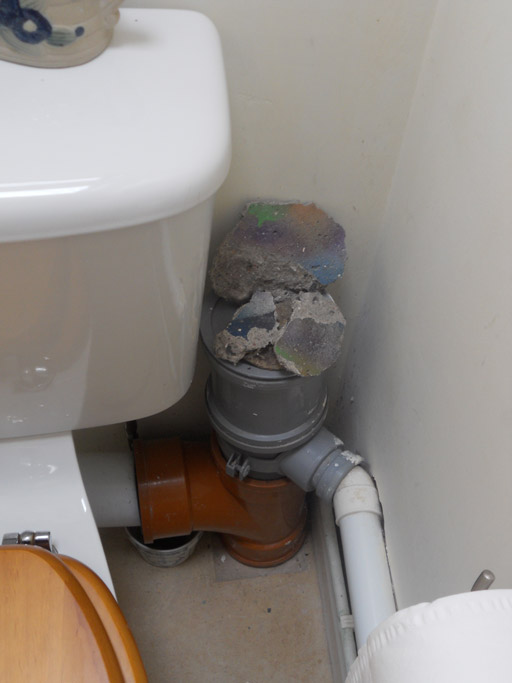A piece of broken masonry
On the surface, my object has little real value, either practical or aesthetic, and, as if to underline the point, it currently occupies an unpromising location next to my downstairs toilet. And if that isn’t bad enough, it has also suffered from the ravages of time; what was once a single piece of spray-painted concrete is now broken into three fragments, the largest measuring 4 x 4 inches.
This seemingly unpromising piece of broken masonry nonetheless signifies a great deal, on a global scale as well as personally. It is, in fact, a small fragment from the Berlin Wall, the destruction of which in 1989 probably marks one of the most important events of the late twentieth century. It is, then, a hugely significant artefact and one that I am proud to own.

Objects such as this clearly have a meaning and value beyond their constituent parts (in this case spray-painted rubble otherwise fit only for the dump). As a historian and someone concerned for the rights of fellow citizens in Europe, these shards carry huge meaning and relevance, acting as a symbolic reminder of one of the most important events in my own lifetime. Created from an act of mass destruction or popular iconoclasm, their existence today represents a victory for the oppressed individual and nation, as well as a constant reminder of other less fortunate people in the world who remain in thrall to tyrants. The eagle-eyed will also have noticed that I have chosen to ‘exhibit’ them, albeit in somewhat downbeat fashion. In doing so, there is a sense in which I am consciously echoing the role of the modern museum.
These fragments of the past also convey other meanings for me, their owner. The fragment was given to me and my partner as a wedding present in 1990, and thus reminds me of one of the most important and happiest events in my own personal life. As a gift, it also reminds me of the giver, a friend who we visited in Berlin before the Wall came down and who remains close to our family.
Finally, should I be inclined to do so, I could probably sell the fragments as they now possess a monetary value. One of the rich ironies of the physical destruction of the Berlin Wall and the consequent collapse of Soviet communism in eastern Europe lies in the fact that within days of these momentous events pieces of the Wall came onto the open market and began to sell around the world. Today, even small pieces of the Wall similar to my own sell on the internet for between £40 and £50. Elsewhere, companies advertise fragments of the wall as a unique accessory fit to adorn any corporate headquarters, both as an investment and as a reward to corporate go-getters who help to ‘break down barriers’ in the workplace.
Activity 2
Think of an object in your ownership which possesses both personal and wider significance for you. What is the object and why it is important to you?
Discussion
Possession of things – the ability to hold and touch them – clearly affords a degree of intimacy and significance that transcends both the written word and the vicarious pleasure of seeing objects in glass cases in museums. Our memories and very identity as human beings are closely wrapped up in the physical objects with which we surround ourselves. Some help create direct connections to our past and forbears; others, such as commemorative mugs, replica sports shirts and holiday souvenirs, say much about how we see ourselves and create identities. They thus form part of our consciousness, both individual and collective, and as such are clearly worthy of further study.
